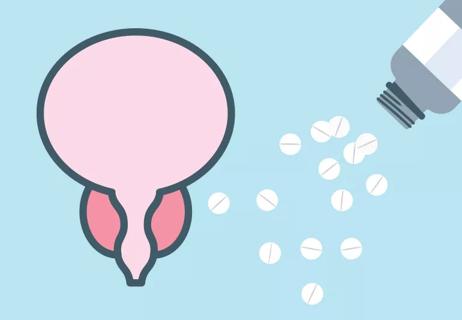Trouble peeing and leaking urine are common indicators of prostate gland issues

A healthy prostate is about the size of a walnut and weighs about 1 ounce (30 grams). But don’t be fooled by its small stature: This gland in the male reproductive system can become a large health concern.
Advertisement
Cleveland Clinic is a non-profit academic medical center. Advertising on our site helps support our mission. We do not endorse non-Cleveland Clinic products or services. Policy
Unfortunately, prostate health often isn’t a preferred conversation topic. (It’s a sensitive matter about a sensitive area, after all.)
“It’s not something they generally want to talk about or bring up,” says urologist Brad Gill, MD. But it NEEDS to be brought up, he emphasizes — and here’s why.
Some prostate conditions can affect your quality of life and lead to some embarrassing situations. Other possibilities — and we’re talking cancer here — may become life-threatening concerns.
Let’s look at the two most common issues.
An enlarged prostate, or benign prostatic hyperplasia (BPH), is the most common prostate problem. It’s a natural part of our aging process. About half of all men will have signs of BPH by age 60.
“Certain body parts continue to grow as you age,” explains Dr. Gill. “Your ears and nose are examples that you can see as they get bigger over time. Well, the same thing is happening inside you with your prostate.”
How much can your prostate grow? More than you might think, as that walnut-sized gland can grow to the size of a lemon by age 60. Sometimes, it can even get to the size of a grapefruit!
Given its location, an enlarged prostate can become an issue — especially when you pee. (But size is only one factor, as some prostates can be shaped in ways that make them more likely to block or slow urine flow even if they only get a little bit bigger.)
Advertisement
That’s because your prostate is located just below your bladder, your body’s holding tank for urine. There’s a passage, or channel, within the prostate that allows urine to drain out of your bladder and eventually through the tube (urethra) out of your penis.
As your prostate grows, the channel within it becomes blocked by tissue and reduces urine flow.
Untreated BPH can wear out your bladder, leading to the inability to pee (urinary retention), or increase the risk of urinary tract infections (UTI), bladder stones and kidney damage.
About 1 in 8 men develop prostate cancer at some point during their life. In some cases, the disease can be deadly. Approximately 400,000 men around the world died of prostate cancer in 2022.
Now the good news: Prostate cancer usually grows very slowly, allowing most men to get diagnosed and treated before it spreads.
But finding prostate cancer means taking steps to look for it. “The important thing is not to ignore the risk,” emphasizes Dr. Gill. “You want to be proactive and get a prostate cancer screening.”
The risk of prostate cancer increases with age. The American Cancer Society recommends talking to a healthcare provider about a prostate cancer screening at:
Testing is typically done one of two ways. The prostate-specific antigen (PSA) test is the “hallmark” of prostate cancer testing, says Dr. Gill. It measures the amount of the PSA protein in your body. Higher levels may be a sign of prostate cancer.
A digital rectal exam (DRE) may also be used as a screening test. During an in-office DRE, your healthcare provider inserts a gloved, lubricated finger into your rectum to feel your prostate for abnormalities that could indicate prostate cancer.
Dr. Gill encourages you to talk about the importance of prostate cancer screenings with family and friends. Research shows that many men hesitate to take the preventive healthcare step or even discuss the topic.
“Starting the conversation or encouraging someone you care about to get screened is a great way to help normalize things and promote men’s health,” he says.
Advertisement
The prostate conditions mentioned share many of the same symptoms. If you experience the following, it’s best to make an appointment with a healthcare provider to find the reason.
Peeing isn’t something you probably spend much time thinking about. When you need to, you go, right? It just flows out in a steady stream.
But over time, you may notice that your “stream” becomes more of a trickle. That reduction in flow is often a sign of an enlarged prostate that’s blocking the flow of urine. (Think of it like pinching a hose.)
“It’s usually a slow change that happens over years,” explains Dr. Gill. “Eventually, you wake up one day and realize, ‘Wow, I’m really not peeing very well.’”
Other signs of potential prostate problems include:
An abrupt change in urination from one day to the next (such as suddenly being unable to pee) may be a sign of a more serious medical issue. A backup caused by urinary retention can lead to pain and discomfort while putting stress on your kidneys.
As you might imagine, bloody urine is never typical. “It’s always something that warrants getting checked out,” stresses Dr. Gill. “One thing that can cause blood in the urine is cancer — and that is something you don’t want to ignore.”
Advertisement
Conditions that could lead to blood in urine and/or semen include:
“That’s why we suggest seeing your healthcare provider and getting checked to see what’s going on,” he adds.
Advertisement
Learn more about our editorial process.
Advertisement

A prostate massage is used most often for sexual stimulation

Research raises doubts about the effectiveness of supplements for your prostate

Foods that can help, and harm, your prostate

Arousal without orgasm can be uncomfortable, but it’s no reason to pressure sexual interactions

The list includes eating a healthier diet, managing your weight and reducing stress

Adjusting your diet to focus on plant-based, whole foods may improve erectile function

Here’s what you need to know about ED, which most men experience to some degree during their lives

‘Morning wood’ is a natural bodily function and a sign of sexual health

Babies can get congested easily, but you can calm their cough by keeping them hydrated, using nasal drops and running a humidifier

Weight loss may cause loose, sagging skin and muscle loss to your rear

Several conditions, like vitiligo and fungal infection, can cause a loss of pigmentation, leading to white spots or patches on your skin